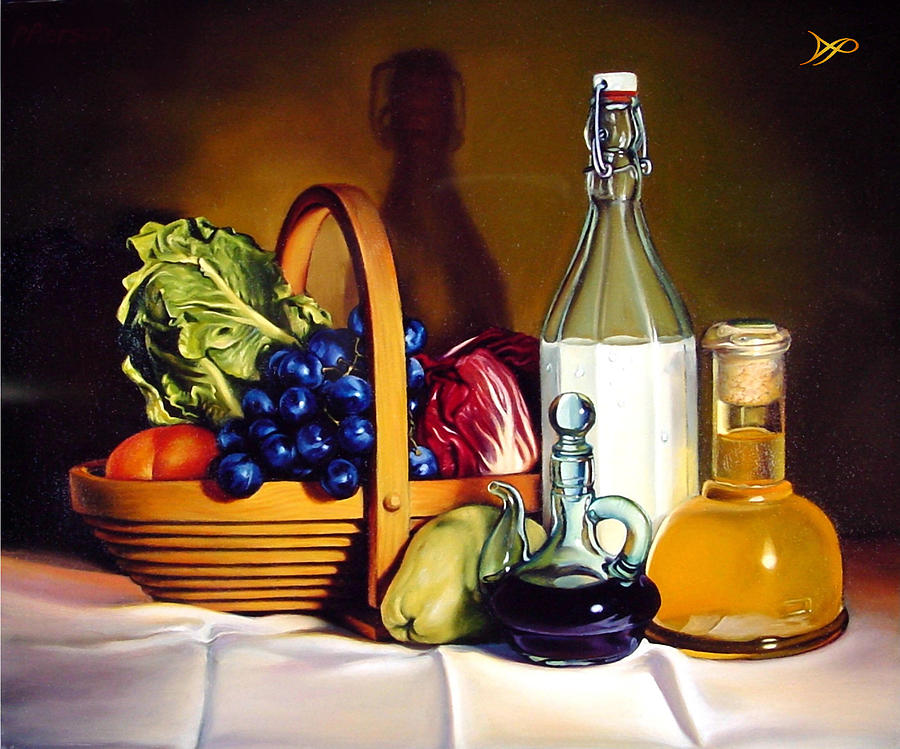High-Quality Framed Oil Paintings for Sale Direct from Artists
High-Quality Framed Oil Paintings for Sale Direct from Artists
Blog Article
Discovering All Regarding Oil Paintings: A Guide to Understanding Their Beauty and Value
Oil paints have actually captivated audiences for centuries, providing a glimpse right into the imaginative proficiency of numerous ages. Their rich background is linked with cutting-edge methods and profound psychological expression. Recognizing the products and techniques behind these artworks can boost admiration. In addition, the market for oil paintings provides possibilities for investors and enthusiasts alike. As one explores this remarkable globe, the question occurs: what makes an oil paint truly useful?
The Background of Oil Paint: A Journey With Time
Although oil painting has origins that date back to old times, it absolutely grew during the Renaissance, when musicians found its adaptability and rich shade capacity. Early instances can be mapped to the 7th century, with techniques advancing especially throughout cultures. The tool became famous in Northern Europe in the 15th century, particularly with the jobs of artists like Jan van Eyck, that pioneered its usage for comprehensive realistic look and dynamic tones. This period marked a separation from tempera paints, allowing for higher deepness and structure. As oil paint spread, it influenced many musicians, resulting in work of arts by renowned figures such as Leonardo da Vinci and Rembrandt. The tool's legacy proceeds, forming the art world well into contemporary times.
Recognizing Oil Repaints: Materials and Techniques
As artists discover the globe of oil paints, they encounter a diverse variety of products and methods that specify this tool. The key components of oil paint include pigments, which supply color, and drying oils, such as linseed, that bind the pigments and assist in application. Numerous additives can modify the paint's structure and drying out time, boosting versatility. Techniques like glazing, where transparent layers are accumulated, and impasto, which includes using thick paint, allow for different visual effects. Additionally, making use of brushes, combination blades, and also fingers can develop one-of-a-kind textures and finishes. Understanding these materials and techniques makes it possible for musicians to completely reveal their imagination and accomplish the preferred effect in their artwork.
The Duty of Shade in Oil Paints
Color plays a critical role in oil paints, influencing both aesthetic charm and emotional resonance. Understanding shade theory fundamentals, consisting of the partnerships between shades, can enhance a musician's capability to share state of mind and atmosphere. In addition, grasping color blending methods permits better deepness and richness in a paint's combination.

Shade Theory Basics
Understanding shade concept is essential for musicians dealing with oil paints, as it forms the foundation for developing unified and aesthetically appealing compositions. Shade theory incorporates the research of exactly how colors engage, the color wheel, and the relationships between key, additional, and tertiary colors. Musicians use corresponding colors to enhance contrasts and produce centerpieces, while similar colors advertise unity and cohesiveness within a piece. In addition, the concepts of great and warm shades affect the understanding of deepness and area in a painting. Grasping these concepts enables artists to adjust shade efficiently, guiding the visitor's eye and interacting their intended message. Proficiency of color concept ultimately improves an artist's ability to share emotions and concepts through their work.
Psychological Impact of Color
The psychological impact of shade in oil paints plays an essential duty in how customers link and regard with artwork. Shades evoke details feelings and state of minds, affecting the audience's psychological state. For example, cozy hues like reds and oranges can develop a feeling of heat and power, while amazing tones such as blues and environment-friendlies often evoke peace or introspection. Artists purposefully choose color combinations to boost narrative components, leading the target market's psychological trip. The saturation and comparison of shades additionally magnify these results, attracting focus and developing focus. Inevitably, the interaction of shades in oil paintings not only enhances their aesthetic charm however also acts as an effective medium for emotional expression, enriching the customer's experience and interpretation.
Color Mixing Techniques
While several facets of oil paint add to the overall make-up, understanding color mixing strategies is essential for attaining preferred impacts and depth. Shade mixing can be approached through different techniques, including the additive and subtractive procedures. Additive mixing involves incorporating shades of light, while subtractive mixing depends on pigments, where shades blend to develop brand-new shades. Musicians usually use a restricted scheme to produce harmonious jobs, recognizing the partnerships between key, additional, and tertiary colors. Methods such as glazing and scumbling even more boost deepness and brightness. By skillfully blending colors, an artist can evoke emotions, develop centerpieces, and accomplish a sense of realistic look, eventually elevating the painting's emotional and aesthetic influence.
Famous Oil Painters and Their Iconic Works

Renowned for their mastery of color and strategy, oil painters have produced several of the most renowned art work in history. Distinguished artists like Vincent van Gogh astounded target markets with his emotive brushwork in "Starry Night," while Claude Monet's "Impact, Sunrise" prepared for Impressionism. Leonardo da Vinci's "Mona Lisa" continues to be an enduring sign of creative wizard, showcasing his ability in capturing human expression. Rembrandt's "The Evening Watch" highlights his innovative usage of light and shadow. Other significant numbers consist of Pablo Picasso, who revolutionized modern art with his bold experimentation in jobs like "Les Demoiselles d'Avignon," and Georgia O'Keeffe, whose vivid representations of blossoms and landscapes assisted define American modernism. Each artist's unique design added greatly to the oil paint landscape.
How to Examine the Top Quality of an Oil Paint
Reviewing the high quality of an oil painting involves a mindful evaluation of craftsmanship methods, in addition to an analysis of shade and structure. Observing brushwork, layering, and the application of paint can expose the artist's skill level. Additionally, the interaction of shades and the general plan of elements contribute significantly to the painting's visual value.
Analyzing Workmanship Techniques
A meticulous evaluation of craftsmanship strategies is necessary for identifying the quality of an oil paint. Evaluators should initially take a look at the application of paint; thick, textured brushstrokes may recommend a skilled hand, while extremely uniform applications could indicate a lack of deepness. oil paintings for sale. The layering method is also essential; the existence of lusters and varied thickness can boost luminosity and intricacy. Additionally, the high quality of the products made use of, such as the canvas and pigments, plays a significant function in longevity and total aesthetic. Interest to detail in components like edges and shifts in between shades reflects the artist's dedication to their craft. Ultimately, these techniques add to the paint's psychological impact and market value, offering as indications of the artist's skill and intent
Examining Shade and Composition
While assessing the high quality of an oil paint, one have to concentrate on the interplay of color and structure, as these aspects are basic to the art work's total effect. Shade selections can develop and stimulate emotions mood; for that reason, the musician's combination need to be examined for harmony and contrast. A well-balanced composition guides the customer's eye and develops a feeling of unity. Musicians usually use strategies like the regulation of thirds or leading lines to enhance aesthetic passion. Additionally, using light and darkness can include deepness, boosting the three-dimensionality of the paint. Inevitably, a successful oil painting marries shade and make-up, engaging the audience and inviting a much deeper appreciation of the artist's vision and method.
Taking care of and Preserving Oil Paintings
Correct treatment and conservation of oil paintings is necessary for preserving their integrity and longevity. To protect these artworks, it is vital to display them away from straight sunlight, which can create fading and discoloration. Maintaining a steady environment with regulated temperature level and moisture additional aids in stopping damage. Cleaning need to website be done carefully using a soft, dry cloth, staying clear of any type of severe chemicals that could damage the paint or varnish. Routine inspections for indicators of degeneration, such as flaking or cracking, are advisable. When transporting or keeping oil paints, proper cushioning and framing are needed to avoid physical injury. Ultimately, attentive care adds to the aesthetic charm and worth of oil paintings with time.
The Market for Oil Paints: Spending and collecting
Understanding the marketplace dynamics for oil paintings is essential for financiers and collection agencies alike. The value of these artworks is influenced by various variables, including the artist's online reputation, historical relevance, and existing trends. Collection agencies usually seek pieces that reverberate directly while thinking about possible admiration in value. Auctions and galleries serve as main venues for trading, with rates varying based on need and rarity. Purchasing oil paints calls for study into the market, as well as an understanding of authenticity and provenance. Furthermore, arising musicians might provide possibilities for substantial returns, while developed names can regulate high rates. Overall, a critical approach to collecting can yield both aesthetic pleasure and financial rewards.

Regularly Asked Inquiries
What Are the Environmental Effects of Oil Paint Products?
The ecological influences of oil painting materials include the release of unpredictable organic compounds (VOCs), damaging waste generation, and source removal for pigments. These variables contribute to pollution and ecological deterioration, increasing worries amongst ecologically aware musicians and customers.
Exactly How Do Different Canvases Affect Oil Painting Outcomes?
Various canvases influence oil painting results substantially. Absorbency, surface area, and appearance high quality can modify paint application, drying times, and shade vibrancy. Musicians usually pick details canvases to attain preferred impacts and improve their artistic expression.
Can Oil Paintings Be Recovered if Harmed?
If harmed, Oil paints can certainly be restored. Expert conservators utilize various strategies to fix splits, clean surface areas, and address discoloration, guaranteeing that the artwork preserves its initial charm and worth for future generations.
What Are the Indicators of an Initial Oil Paint?
The indicators of an original oil painting include visible brush strokes, texture variations, and an uneven canvas weave (oil paintings for sale). Additionally, authenticity might be validated through provenance, trademarks, and the visibility of a varnish layer unique to oil tools
Exactly How Has Innovation Influenced Modern Oil Painting Techniques?
Innovation has actually considerably influenced modern-day oil paint techniques by presenting digital devices for planning, boosted materials for appearance and longevity, and on-line platforms for sharing and selling art, thereby broadening artists' innovative opportunities and audience get to. Oil painting has roots that date back to old times, it really prospered during the Renaissance, when musicians uncovered its flexibility and abundant shade capacity. The emotional impact of shade in oil paints plays a critical role in exactly how visitors connect and perceive with art work. While many elements of oil painting add to the total composition, grasping shade blending techniques is necessary for attaining desired impacts and deepness. Evaluating the quality of an oil painting includes a mindful evaluation of craftsmanship methods, as well as an evaluation of color and make-up. While reviewing the high quality of an oil paint, one should focus on the interplay of shade and composition, as these aspects are basic to the art work's overall effect.
Report this page